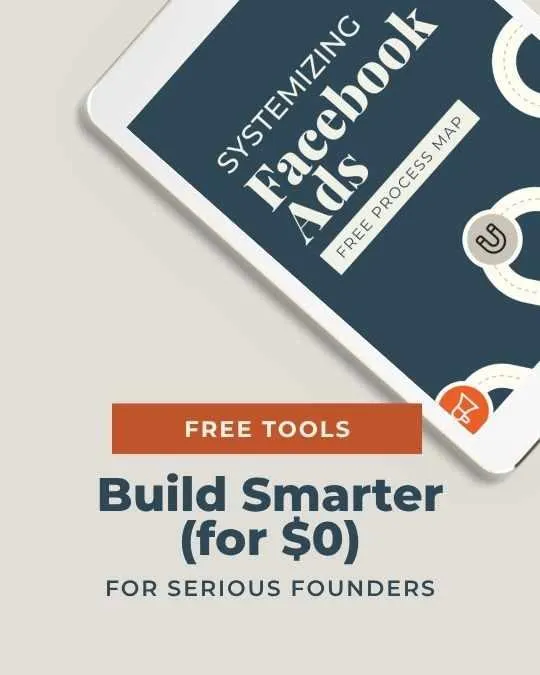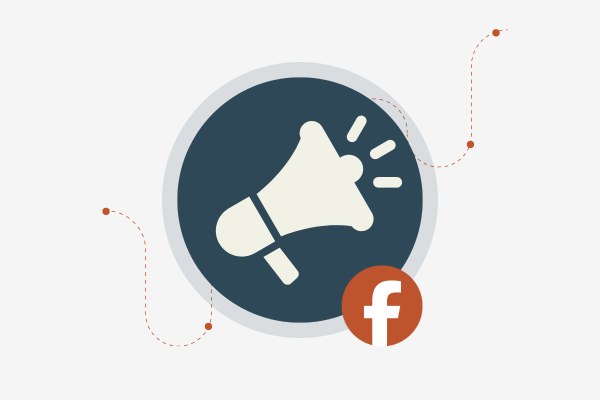How Anchor Pricing Can Help Scale Your eCommerce Store: Boost Profits Fast
What's the secret sauce to scaling your eCommerce store? Anchor pricing can shift the way customers perceive your product's value. By setting a high anchor price, you create an illusion of a better deal when the actual price seems lower. This tactic isn't just a trick; it's psychology at work.
Picture this: You walk into a store and see a product listed at $200 slashed to $150. Your brain immediately feels like it's scored a deal, thanks to the initial anchor price. Smart pricing can guide your customers towards seeing the value of your products, making them feel like winners.
If you're not using anchor pricing, you're leaving money on the table. It guides decision-making in shopping, making your prices look attractive compared to high anchored figures. Harness this strategy and watch as your revenue trajectory points upwards.
Key Takeaways
Anchor pricing boosts perceived product value.
It uses customer psychology to guide buying decisions.
Avoid overlooking anchor pricing as a pricing strategy.
Understanding Anchor Pricing
Anchor pricing is like a magic trick for boosting sales. It taps into how we think about prices, changing what we feel is a good deal. If you get anchor prices right, you'll guide shoppers straight to the checkout.
What Is Anchor Pricing, Really?
Anchor pricing sets a baseline. Imagine a jacket marked "Originally $200, now $100." The $200 is the anchor price. It's your starting point, making $100 feel like a steal. This tactic is used across stores to influence decisions.
Retailers mark high and sell lower. It's not just about numbers; it's about how you present them. A higher anchor can make the current price seem irresistible, even if that lower price is normal. Check out examples at Luigi's Box.
The Psychology Behind The Number Game
Playing with anchor prices isn't just about math; it's about psychology. Our brains like easy decisions. Seeing a high number first sets the stage. When the actual price appears lower, it feels like winning.
Think of it as setting expectations. The higher the original price, the better the deal seems if the cost drops. This ties into consumer behavior. You’re not just selling products; you’re selling deals, experiences, and emotions.
Anchor Prices vs. Reference Prices: What's The Difference?
Anchor prices and reference prices—sounds similar, right? Not quite. Anchor prices are the number shouted loud and proud. Reference prices are subtler. They’re what customers expect to pay based on past experiences.
Anchor prices are for shock value. Reference prices rely on perceived value. The trick? Balance both. Use a high anchor to grab attention, but align it with reference to avoid disbelief. Customers need to buy the story for them to buy the product.
By playing the number game, you can lead buyers to feel they've snagged a great deal. That's the secret sauce of anchor pricing.
Anchor Pricing in Action
Anchor pricing is your secret weapon for boosting sales. By starting high and then offering strategic discounts, you can shape how customers see value. Dive into how you can use this tactic for your eCommerce store.
Setting the Stage: High Price Anchors
Start with a high anchor price to set the benchmark. It's about first impressions. You want the initial price to serve as the reference point.
When customers see a high initial price, they expect a lot from the product. It sets the price perception. Later, when you introduce a discount, the value looks even bigger.
Think of Black Friday sales as a perfect example. See those high price tags slashed for a limited time? That's anchor pricing at work. It draws shoppers in with urgency and a sense of a big deal.
Discounts & Deals: The Anchoring Effect
Discounts are your next move. You’ve set the stage with a high price. Now, offer discounted prices to unleash the anchoring effect. It’s how you shift consumer perception.
Everyone loves a deal. When you give a discount after showing a higher price, that lower number feels like a steal. The trick is timing and clarity in your offers.
Consumers will flock to your products when they feel they're getting something more for less. This doesn’t just move units; it builds trust over time.
Examples from the Retail Trenches
Look at how big retailers play this game. Stores like Tommy Hilfiger use anchor pricing online. You visit their site, see an original price, then watch it drop.
These methods aren’t just for the giants. You can incorporate tiered pricing in your eCommerce strategy. Offer a base product, and then list more comprehensive packages at varying price points.
By showing different tiers, customers see the potential value across the board. It’s not just about selling the lowest tier but showing them options that seem like upgrades at a mere fraction more.
Leveraging Anchor Pricing for Your eCommerce Store
Anchor pricing is like a magnet for your sales. It's a psychological pricing strategy that sets the stage for your customers, making them see your offers as irresistible deals. Let’s dive into how you can put this strategy to work in your eCommerce store.
Crafting Your Value Proposition
Your value proposition is the hook. It's what grabs your customer’s attention. With anchor pricing, show them the value right off the bat. Display a higher price as the anchor. Then, reveal the actual price you want them to pay. This contrast highlights a deal that's too good to pass up. It’s not just about slashing prices. It’s about offering value they can’t ignore.
Think about what makes your product special. Is it high quality? Exclusive? Let this shine. Emphasize this in your descriptions. Customers want to feel like they’re making a smart decision. By crafting a strong value proposition, you make their choice easy and logical. It's a win-win.
Tiered Pricing: The Ladder to Success
Tiered pricing is a clever move. It’s like building a ladder for your customers. At each step, the next tier offers more, so they get tempted to climb higher. Start with a basic level to get them interested. Then, introduce mid-range and premium options. Each tier should offer something unique and valuable.
This pricing strategy keeps them engaged and curious about what’s next. The goal is to guide them towards the product you want them to pick. Make each step of the ladder enticing enough that they can’t resist going up. This method keeps your price structure clear and enticing, leading your customers to choose more and spend more with confidence.
Savvy Buyers & Comparative Pricing
Your customers are smart. They compare prices. Use this to your advantage with comparative pricing. People tend to judge the worth of something based on other similar items they see. If you show two similar products, one with a high price and the other, your product, at a lower price, you make yours seem like the best deal out there.
Let’s get one thing straight, it’s all about perception. If another product is priced at $300 and yours is $200 with similar features, buyers see value in yours. It’s about creating a perception where they feel like they’re getting more. This way, they trust you more, and that trust often leads to sales.
Balancing Trust and Psychology
Balancing trust and psychology in anchor pricing is powerful. Trust is crucial but so is understanding your customer’s mind. You don't want them to feel tricked. Be transparent about your pricing. Show the original price and the current deal. This transparency builds trust.
If customers believe they’re getting a genuine discount, they buy. Use the power of suggestion to nudge them in the right direction. Keep the experience positive. When they trust you, they return. They tell friends. So, stay authentic, deliver what you promise, and watch that customer base grow.
Pitfalls to Avoid with Anchor Pricing
When using anchor pricing, there are some traps that can hurt your store instead of helping it scale. It's easy to slip into bad habits like setting fake prices, forgetting your profit margins, or underestimating your savvy customers. Keep these pitfalls in mind to make the most of this pricing strategy.
The Trap of Fake Prices
Fake prices can backfire big time. When you use anchor pricing, you set a high original price and then show a discount. But if that original price isn't real, savvy shoppers might catch on.
If customers feel tricked, they won't just leave your store—they might tell everyone they know. Trust is key, so you need to ensure the anchor price has a legitimate basis. Avoid strike-through pricing that's too good to be true. Always be upfront and honest about the original price to keep your reputation strong and your customers loyal.
Maintaining Profit Margins While Anchoring
Anchor pricing should boost sales, not wreck your profit margins. The challenge lies in balancing a tempting discount with a healthy bottom line. Set your anchor price high enough to create a sense of relative value but not so high that the discount eats away your profits.
Make sure the discount reflects genuine savings for the customer, while still keeping your store in the black. Use analytics to understand how low you can go before damaging your financial goals. Stay disciplined with your pricing strategy to ensure your business keeps growing sustainably.
Understanding the Savvy Customer
Shoppers today are sharp, and they know their stuff. They're equipped with tools and information to detect fake deals. That's why understanding your savvy customer is essential.
These buyers compare prices, read reviews, and seek genuine value. Engage with them by offering transparent pricing that respects their intelligence. Avoid the temptation to rely solely on anchor pricing gimmicks. Instead, focus on delivering real benefits and value. This builds a loyal customer base, who trust your prices and are more likely to return for more.
Optimizing Your Pricing Strategy
Boosting your eCommerce business involves more than just throwing up price tags. Smart strategies can make all the difference. Price anchors, competitor analysis, and urgency are key pieces to this puzzle.
Testing & Adjusting Your Price Anchors
Price anchors are like magic. They guide what customers think about costs. To get them right, you need to test. Try different anchor prices and see what pulls in sales.
Use customer feedback and sales data. It's all about tweaking those numbers until you hit the sweet spot. Keep an eye on how changes affect buying behavior. Sometimes a small adjustment can hugely impact consumer choice.
Compare results consistently. Adjust, test, repeat. This is your path to creating effective price anchors in your pricing strategy.
Competing With Giants: Competitor Pricing Analysis
Big players are in the game, but that doesn’t mean you can’t play smart. Start by checking out what they charge. Analyze competitor pricing to understand the market.
Look at their product range, prices, and how they offer value. Spot the gaps. This is where you can slide in with something fresh. Keep your own costs in check to avoid a race to the bottom.
Your pricing should reflect your unique value and quality. Differentiate yourself with better service or added features. Aim for a better offer, not simply a cheaper one.
Creating Urgency Without Cheap Tricks
Urgency drives action. But forget fake countdowns or misleading tactics. They erode trust and won’t work long-term. Instead, highlight genuine scarcity or time-sensitive offers.
Limited editions or special launches add value. Clear and honest communication about discounts or sale end dates is key. Urgency should feel like a benefit, not a pressure tactic.
Emphasize why not waiting is better for them. Use real benefits to motivate purchases. Make sure urgency aligns with consumer behavior naturally—not forced.
This technique builds trust and keeps customers coming back.
Turning Theory into Profits
Anchor pricing isn't just a theory; it's a solid strategy that can transform your e-commerce business. When used right, it boosts sales and improves customer experience by guiding visitors to make smart buying decisions.
Case Studies: Anchor Pricing Success Stories
Ever wonder how big brands make it look so easy? They mastered anchor pricing. Take a page from companies like Amazon. They set a higher reference price next to a discounted price. This shows customers the savings and convinces them it's a great deal.
Smaller brands follow suit and see big gains. Imagine selling a product for $50, next to a crossed-out $70. More often, customers grab the "discount" without thinking twice.
Watch your own conversion rates grow when you highlight potential savings.
Analyzing the Impact of Anchor Pricing on Sales
Numbers don’t lie. Implement anchor pricing, and you'll see a bump in sales. The trick is to make sure the anchor price is believable. If you overdo it, customers might not trust the discount.
Anchor pricing isn't a one-size-fits-all. You need to track its impact on your sales and customer response. This involves studying buying patterns and how customers interact with the pricing.
Use analytics to measure these effects. Keep refining based on what the data shows you. Small tweaks add up to big wins.
From Visitor to Customer: The Final Conversion
The magic of anchor pricing helps turn curious visitors into paying customers. Potential buyers see the original price, which sets a benchmark. Suddenly, the discounted price looks irresistible.
Don’t let this be a guessing game. Use visual cues. Highlight the savings with bold text. Make the original price smaller, next to the attractive new price. It's like leading them by the hand to checkout.
Every click and stay on your page raises the chance of conversion. With anchor pricing, you’re not just selling a product. You’re selling a deal, a steal, a must-have. That’s what converts. That’s what sells.







